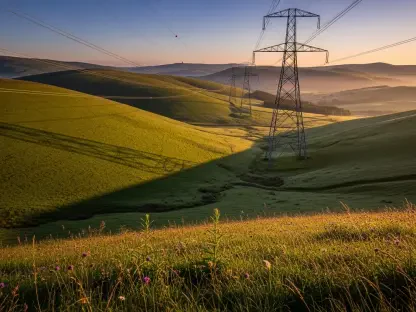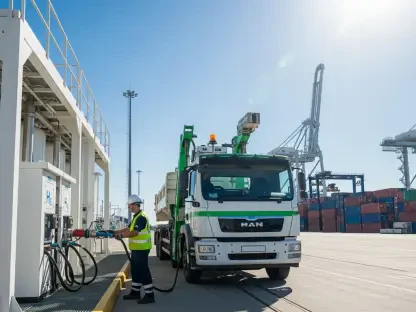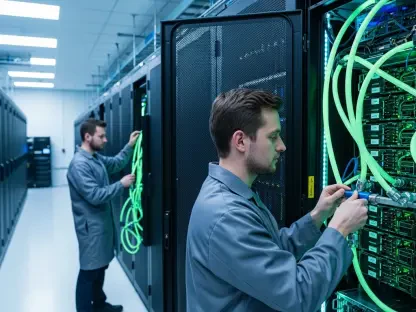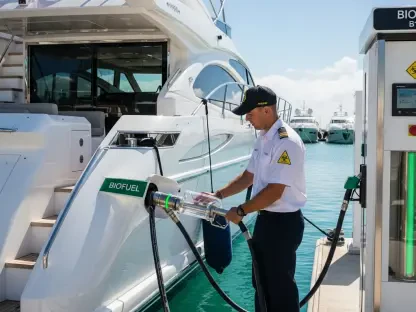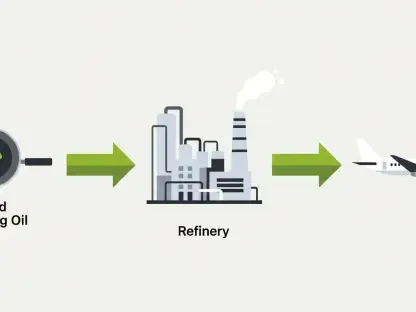Many countries, including the US, have committed to achieving net zero greenhouse gas emissions by 2050 to prevent the planet from warming more than 1.5°C above pre-industrial levels. This means that any gases released will be balanced by an equal amount removed from the atmosphere. Achieving this goal will require swift actions.
Decarbonization involves two main parts:
First, we must work to minimize the amount of greenhouse gases emitted when we combust fossil fuels.
Secondly, reducing our energy use is also possible if we embrace efficient ways to use it in our basements.
It’s projected that power consumption will rise by over two folds by 2050 as more sectors start to apply and require its use.
Phasing out fossil fuels can be achieved through emission capture and enhancement of carbon stock in agricultural lands and forests to phase out these byproducts. This calls for the transformation of energy, production, distribution, and land use systems. Major pollutants stem from electricity generation, industries, transportation, buildings, agriculture, and land use change. They remain among the sectors that require change to result in decarbonization.
The Push for Carbon Neutrality Post-Paris Agreement
Leaders in various countries and companies have since set out goals and pledges to cut their fumes following the Paris Accord of 2015. Climate change mitigation has emerged as a global priority. Many organizations and firms from different fields have declared that they act towards becoming CO-neutral by the year 2050. Although we have seen some strides at various tiers, current estimates show that collectively, we are not going to meet the goals in Paris, thus the call for more efforts.
A Path to 10 Billion by 2060
As the world population is expected to grow to 10 Billion by 2060, there will be a growing demand for smart or at least larger and better grids. To achieve this, there is a need to bring down emissions per unit of electricity generated through the use of renewable sources of electricity rather than fossil based sources.
The cost of renewable energy is coming down and the prices of solar panels have come down to almost 80 % and wind power costs have reduced by nearly 40% within the past decade. Nevertheless, the unpredictable character of the sustainable options means that conventional fossil and nuclear electricity installations are still necessary.
To achieve net zero emissions, the United States must increase the share of carbon-free electricity to at least 75 percent by 2030. This will involve boosting generation from renewable resources, ensuring the safety of existing nuclear facilities, and either retiring or upgrading aging coal plants to capture 90 percent of their greenhouse gas output. Expanding the CCUS system for capturing CO2 from the remaining fossil fuel is essential.
Effective use of waste heat to improve power plant capabilities and the integration of renewable sources into the grid requires the expansion of transmission lines and affordable energy storage systems. With smart technologies like microgrids that operate independently from the main network, consumers should be encouraged to reduce electricity consumption during peak demand periods.
Tackling Emissions from Steel, Cement, and Chemicals
Some of the largest sectors in terms of CO2 and methane gases involve industries such as steel, cement, chemicals, oil, coal, and gas. It is very difficult to decarbonize these sectors because many industrial processes, including iron and steel making and cement production, are statistically energy intensive and require high temperatures, hence being conventionally accomplished via fossil fuels.
Actual decarbonization implies a fundamental change in organizational processes in the industrial sector. However, one interesting way to achieve such an improvement in power efficiency is through process integration. This can be done by using innovative designs in construction, modifying already existing processes, or enhancing operation processes.
Measures such as cogeneration and concentration of several plants in a specific area act as additional approaches to attaining improved productivity in industry.
In the promotion of sustainability, decentralization of processes with renewable energy sources is crucial where possible. Biomass, which is produced through sustainable systems, can be regarded as fuel for firms such as cement factories and steel plants. The other option for steel production is through the combustion of charcoal rather than coal. Also, green hydrogen offers an opportunity to achieve a required grade of ammonia for the production of fertilizers. Growing the use of carbon capture and storage is incredibly vital in the reduction of discharges from cement production.
Transportation Strategies for a Zero-Emission Future
Aviation and maritime activities account for 19% of total CO2 gases. To achieve net zero by 2030, 50% of new vehicles in the U.S. must be zero-emitting, either as electric vehicles powered by sustainable fuel options or hydrogen fuel cell vehicles. Expanding EV charging stations outside California and developing more potent, affordable batteries are crucial. Improving vehicle performance and reducing fuel consumption are also key strategies.
Enhancing mass transit, rail options, and car-sharing services can further help lower emissions. Due to the challenges of electrification, hydrogen and synthetic liquid fuels are viable for long-haul trucking. Aviation, contributing about 2.5% of global CO2, requires better air traffic management and exploration of alternative fuels like biofuels and green hydrogen. Maritime transport, responsible for 2.5% of global emissions, could improve with new vessel technologies, though the transition to low-carbon fuels may be limited by the cost of heavy fuel oil.
Comprehensive Approaches to Lowering Building Emissions
Shockingly, 6% of CO2 gases come from the construction of buildings and their materials and functions. To cut pollutants during manufacturing, complement them with sustainable materials, and build structures that generate more power through the use of solar tractors.
Use modern insulation techniques and materials for interiors, heat pumps, cooling, lighting, and efficient energy management systems. Standards for the economical use of electricity in buildings and appliances are essential for a nation.
Addressing the Impact of Deforestation and Farming
Agriculture is responsible for 1% of global CO2 output and 38% of methane, primarily due to livestock farming. Reducing these greenhouse gases necessitates sustainable practices like regenerative agriculture. Encouraging these techniques among farmers and mitigating methane from cattle is essential.
Consumers should also limit their consumption of meat and dairy products to reduce the impact of deforestation linked to land cleared for soy production and grazing. This land use change contributes to 14% of CO2 equivalents and 5% of methane equivalents, collectively releasing about 9 billion tons of CO2 annually. Promoting afforestation and preserving existing forests is crucial for enhancing carbon storage.
How Nations Are Reducing Carbon Footprints
Several countries are making giant strides in reducing their CO2 footprint. They can easily afford to do it because they are endowed with many natural resources and investments. These include China, Costa Rica, Denmark, Ethiopia, the United Kingdom, Norway, and Paraguay.
For instance, Ethiopia and Costa Rica rely heavily on water to generate energy, while Norway and Paraguay obtain a significant portion of their electricity from renewable sources, primarily hydropower. Additionally, China, Denmark, and the UK have set targets to use energy more efficiently, with numerous policies and funds allocated to achieve these objectives.
In 2019, the US and China were the leading players in installing new wind and solar capacity. This means nearly a quarter of China’s total energy generation now comes from electricity rather than fossil fuels. Germany has also set a goal to achieve 100 percent renewable energy by 2035.
Pathway to Net Zero
The Brookings Institution expects that in light of current and emerging technologies, net zero emissions can be attained by 2050. But, to achieve this aim, considerable changes in behavior, new policies, and international cooperation are needed.
Transforming the sectors of power generation, transportation, and buildings presents a significant challenge due to the long-term costs associated with short-term investments. Between 2021 and 2050, $275 trillion will be needed to achieve net zero, with 75% allocated to tangible goods.
Research indicates that the expenses for zero-emission electricity necessary to fully transition the industry would increase by four to nine times if no action is taken. This suggests that electricity prices are likely to rise as renewable resources expand and grid issues are addressed. While consumers may need to spend more initially to obtain energy from these sources, costs are expected to decrease in the long run due to the lower operational expenses associated with renewable energy systems.


